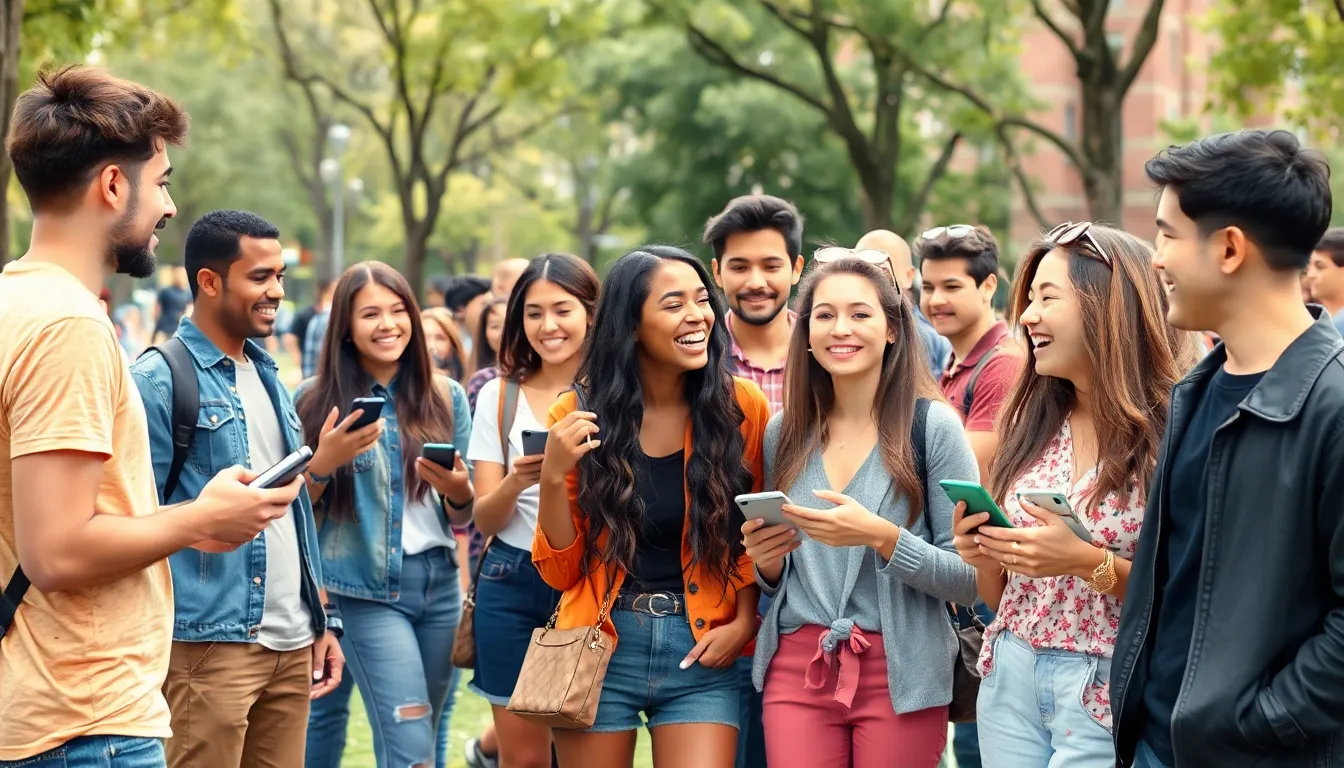In a world where even the most bizarre trends can go viral, the question arises: can laturedrianeuro spread? This intriguing concept has sparked curiosity and debate among enthusiasts and skeptics alike. Picture this: a phenomenon that’s as contagious as a catchy tune, yet as mysterious as your neighbor’s cat that only appears during full moons.
As scientists and social media influencers dive into the depths of this peculiar topic, they uncover fascinating insights that might just change the way we think about spreadable ideas. Whether it’s a quirky meme or a groundbreaking theory, understanding the dynamics of laturedrianeuro could be the key to unlocking the next big thing. So, buckle up and get ready to explore the wild and wacky world of laturedrianeuro—because who wouldn’t want to be part of the next viral sensation?
Can Laturedrianeuro Spread
Laturedrianeuro represents a unique concept that examines how ideas gain traction in modern culture. This phenomenon captures attention because of its implications for understanding virality. Identifying patterns in how different trends emerge forms the core of its study.
Researchers investigate various aspects of laturedrianeuro. Its relationship to social media dynamics reveals crucial insights about audience engagement. Trends can spread rapidly within digital landscapes, making it easier for specific ideas to reach wider audiences. The mysterious nature of how concepts gain popularity also intrigues both scientists and influencers.
Laturedrianeuro encompasses numerous factors contributing to the spread of ideas. Emotional appeal often plays a significant role in whether an idea resonates with people. Viral content typically elicits strong reactions or touches on universal themes. Such connections help explain why certain notions seem to capture public interest overnight.
In terms of applications, understanding laturedrianeuro can enhance marketing strategies for brands. Advertisers utilize insights from this phenomenon to create content that engages potential customers effectively. Data-driven approaches also emerge as key tools in predicting which ideas might trend.
Observations suggest that laturedrianeuro isn’t limited to digital platforms. Offline interactions and cultural context significantly influence the dissemination of ideas. Diverse environments lead to varied interpretations, further shaping how concepts evolve.
As investigations into laturedrianeuro advance, the relevance of this area of study becomes increasingly clear. It signifies a shift in comprehending cultural dynamics in our interconnected world. Each discovery uncovers new layers of complexity surrounding the spread of ideas and trends.
Mechanism of Spread

Laturedrianeuro’s spread involves complex interactions and diverse channels. Researchers focus on understanding how ideas propagate through various platforms and contexts.
Transmission Pathways
Social media platforms serve as primary avenues for laturedrianeuro’s transmission. Users share content rapidly, allowing ideas to reach vast audiences instantly. Offline environments, such as gatherings or events, play essential roles in reinforcing these trends. Word-of-mouth interactions encourage the organic diffusion of concepts among individuals. Additionally, traditional media outlets still contribute, amplifying the visibility of specific ideas. These transmission pathways create a web of interconnected nodes, enhancing the potential for virality.
Factors Influencing Spread
Emotional resonance significantly shapes the spread of laturedrianeuro. Ideas that evoke strong feelings attract and maintain attention more effectively. Audience demographics influence how content is received, with younger generations often more receptive to innovative concepts. Cultural relevance also plays a critical role; ideas aligned with current societal themes resonate more widely. Timing of the content’s release impacts its spread as well. Appropriate contexts can elevate engagement and encourage broader discussions surrounding the idea.
Symptoms and Detection
Recognizing the symptoms of laturedrianeuro access key insights into its spread. Awareness of early signs enhances detection and understanding of this phenomenon.
Early Signs
Common early symptoms include increased social media engagement and heightened discussions across diverse platforms. Individuals may notice a surge in shared posts, signifying growing interest. Frequent mentions in conversations reflect its rising prominence. Emotional responses, such as enthusiasm or curiosity, often manifest among those exposed. Additionally, specific themes or concepts trigger stronger reactions, indicating potential virality.
Diagnostic Methods
Several diagnostic methods help identify laturedrianeuro effectively. Social media analytics tools track engagement metrics, such as likes and shares, providing quantitative insights. Content analysis enables researchers to examine the emotional tone and themes prevalent in discussions. Surveys measuring public sentiment capture qualitative data about perceptions and reactions. Monitoring news cycles and trend reports offers contextual information on how trends evolve over time. Combining these methods creates a comprehensive picture of the laturedrianeuro landscape.
Treatment Options
Treatment options for laturedrianeuro focus on managing symptoms and enhancing engagement strategies. Several approaches exist, including medications and supportive care.
Medications
Medications may help alleviate symptoms associated with laturedrianeuro. Antidepressants can effectively address mood disorders linked to emotional responses. Additionally, anti-anxiety medications provide relief for those experiencing heightened stress related to viral phenomena. Monitoring patients closely ensures that the chosen medications align with individual needs while minimizing side effects.
Supportive Care
Supportive care plays a crucial role in managing laturedrianeuro. Therapeutic interventions, such as cognitive behavioral therapy, focus on guiding individuals through their emotional responses. Engaging in group activities fosters a sense of community and belonging. Additionally, educational resources promote understanding, allowing individuals to navigate the complexities of trends and ideas more effectively. Providing emotional support strengthens resilience, enhancing overall well-being in the face of viral challenges.
Conclusion
Exploring laturedrianeuro opens up a captivating dialogue about how ideas permeate modern culture. Its intricate relationship with social media and emotional engagement reveals the dynamic nature of virality. The insights gained from studying this phenomenon not only enhance understanding but also inform marketing strategies that resonate with audiences.
As research progresses and more individuals engage with this concept, the potential for laturedrianeuro to shape future trends becomes increasingly evident. Recognizing its symptoms and leveraging effective engagement techniques can provide a competitive edge in navigating the ever-evolving landscape of ideas. Embracing this phenomenon could lead to innovative approaches that redefine how ideas spread in today’s interconnected world.